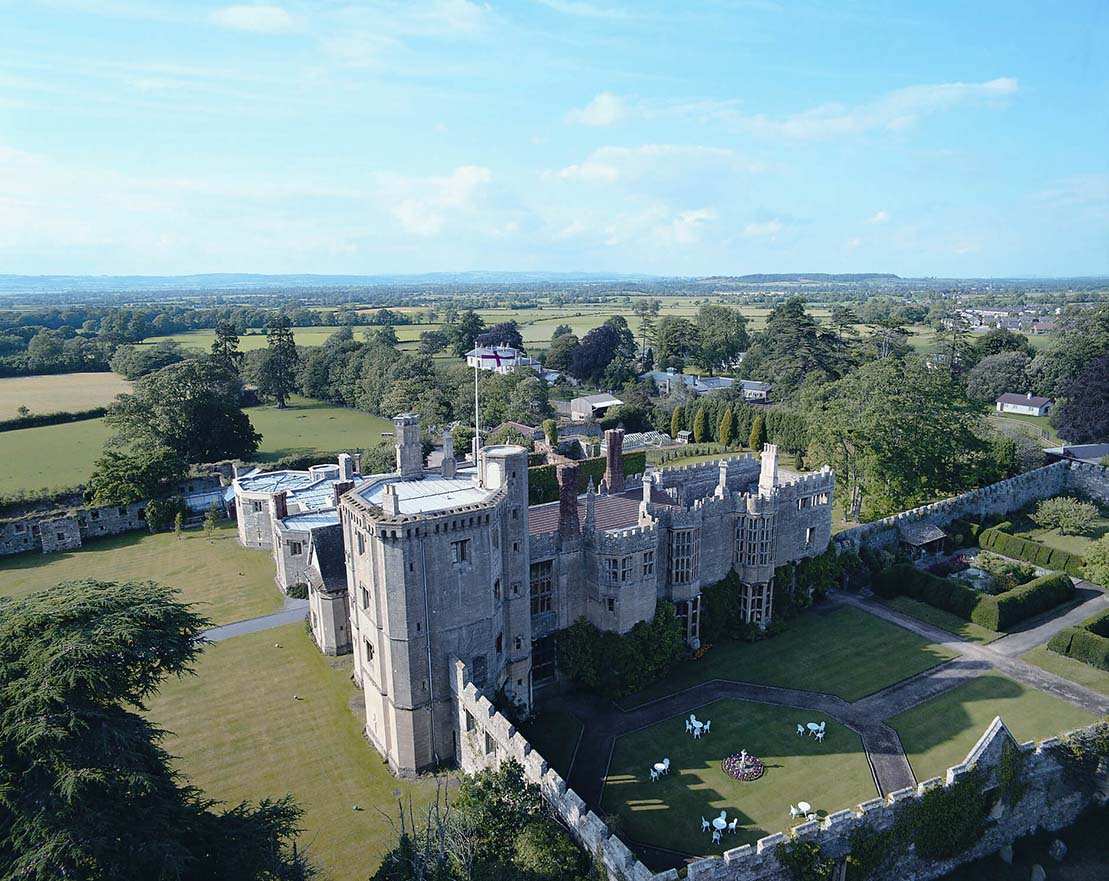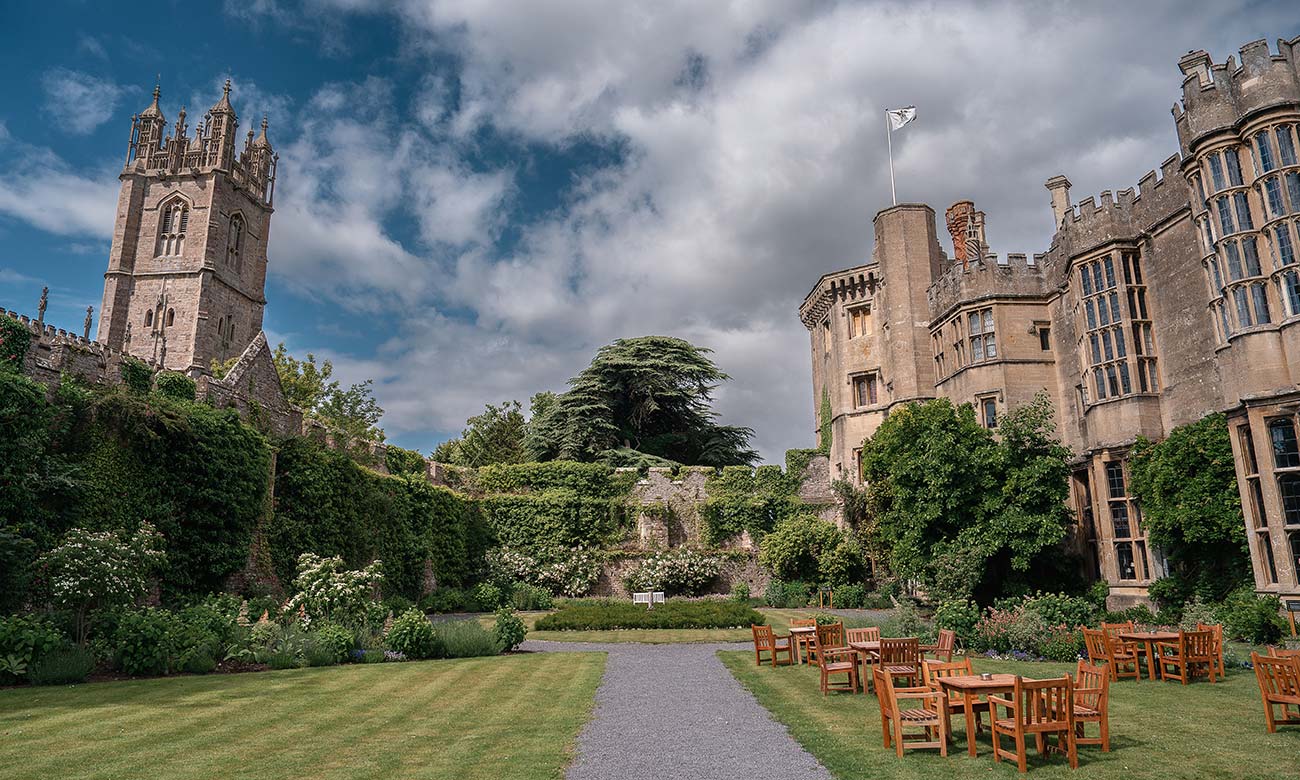Thornbury Castle
Thornbury Castle stands as a remarkable testament to the rich heritage and architectural prowess of England’s Tudor period. Situated in the heart of Gloucestershire, this castle captures the imagination of history enthusiasts. Furthermore, it provides visitors with an authentic experience of Tudor luxury. Known for its majestic turrets, intricate stonework, and connections to historical figures, Thornbury Castle offers a glimpse into the lifestyle of 16th-century nobility. Today, it operates as a hotel, allowing guests to experience history in the setting of a real Tudor castle.
In this article, you will discover the castle’s unique location. Its storied history and current status as a heritage site and luxury accommodation are also explored. Through its enchanting architecture and fascinating historical connections, Thornbury Castle remains a quintessential part of England’s legacy.
Location of Thornbury Castle
Nestled in the South West of England, Thornbury Castle is located in the town of Thornbury within the county of Gloucestershire. Situated just 12 miles north of the city of Bristol, it is conveniently accessible for both locals and international visitors. The castle is surrounded by idyllic gardens and framed by scenic countryside, enhancing its picturesque appeal. Thornbury’s location in the Vale of Berkeley offers a lovely backdrop. The proximity to the River Severn adds to the natural charm of the area. The town itself is known for its quaint historical character.
The nearby cities of Bath and Bristol further enhance Thornbury’s appeal. They provide visitors with additional cultural and historical sites to explore. Gloucestershire’s mild climate and lush landscapes contribute to the castle’s romantic setting. It remains a desirable destination for history lovers, architectural enthusiasts, and tourists seeking an immersive experience in England’s past.

History of Thornbury Castle
The story of Thornbury Castle begins in 1510. Edward Stafford, the 3rd Duke of Buckingham, undertook its construction. Stafford was one of the most influential noblemen of his time and a descendant of King Edward III. He sought to build a residence that would reflect his status and power. The design of Thornbury Castle was influenced by both defensive and residential architectural styles, combining fortifications typical of medieval castles with luxurious features suited to a noble residence. The castle’s grand layout was intended to rival the royal residences of the Tudor era. It included expansive grounds, extensive gardens, and opulent interiors.
However, the fate of Thornbury Castle took a drastic turn due to the political tensions of the time. Edward Stafford’s ambitions and noble bloodline led to suspicions from King Henry VIII. The king perceived the Duke as a threat to his rule. In 1521, the Duke was arrested on charges of treason and subsequently executed, leading to the confiscation of his property. Following Stafford’s death, Thornbury Castle was claimed by the crown, and King Henry VIII himself visited the castle on several occasions. In 1535, Henry VIII and his second wife, Anne Boleyn, stayed at the castle. This visit further cemented its place in English royal history.
After these visits, Thornbury Castle fell into a period of decline. The structure was left incomplete, and portions of the planned fortifications were never realized. Over the centuries, the castle changed hands multiple times. It passed between various prominent families. During the English Civil War, it was partially damaged and later abandoned. This left it in a dilapidated state until efforts to restore it began in the 19th century. In the Victorian era, the castle was partially restored and adapted for residential use. This ensured that its legacy would endure.

Current status
Today, Thornbury Castle stands as one of the most well-preserved Tudor castles in England. It serves both as a historic site and a luxury hotel. In recent years, significant restoration efforts have been undertaken to preserve its original Tudor features. For example, the decorative chimneys, crenellated battlements, and intricately carved stone windows have all been carefully maintained. As a result, guests can now experience the castle’s grandeur by staying in rooms that retain authentic Tudor elements. Moreover, antique furnishings, large fireplaces, and tapestries echo the castle’s storied past.
The castle’s grounds have also been meticulously maintained, with gardens inspired by traditional Tudor landscaping. The Privy Garden, designed to replicate the aesthetic of the period, features fragrant roses and manicured hedges. Topiary transports visitors back to the 16th century. Modern amenities have been incorporated thoughtfully, allowing the castle to retain its historical charm while meeting contemporary standards of comfort.
Thornbury Castle has become a popular venue for weddings, events, and historical tours. It offers visitors an immersive experience of Tudor life. Guests can dine in the castle’s restaurant, which is housed in what was once the Duke’s original dining hall. Here, traditional British dishes are served with a modern twist. With its authentic atmosphere, the castle allows guests to dine and sleep in quarters once frequented by royalty. Tours of the castle provide insights into its architectural features. The thick walls, arrow slits, and grand staircases all bear witness to the castle’s dual function as both a fortress and a residence.
Admission
Community features
Castle features
Video
Location
Official website
Featured listings














